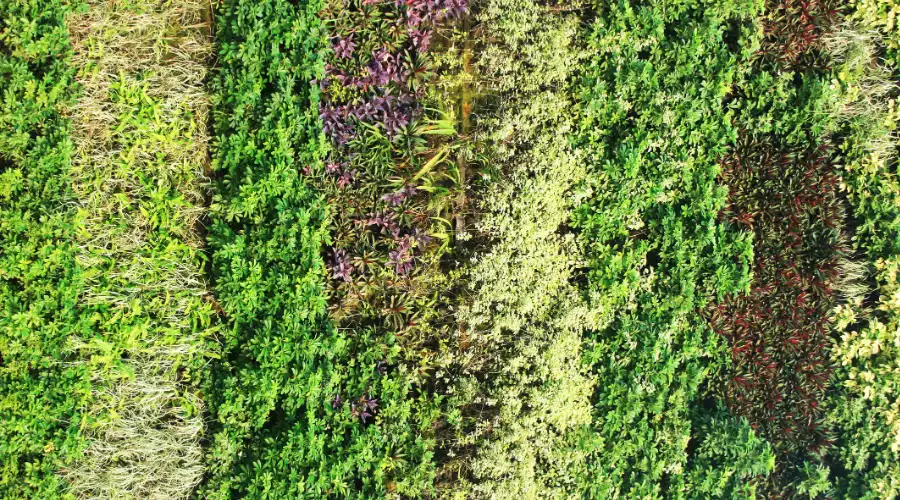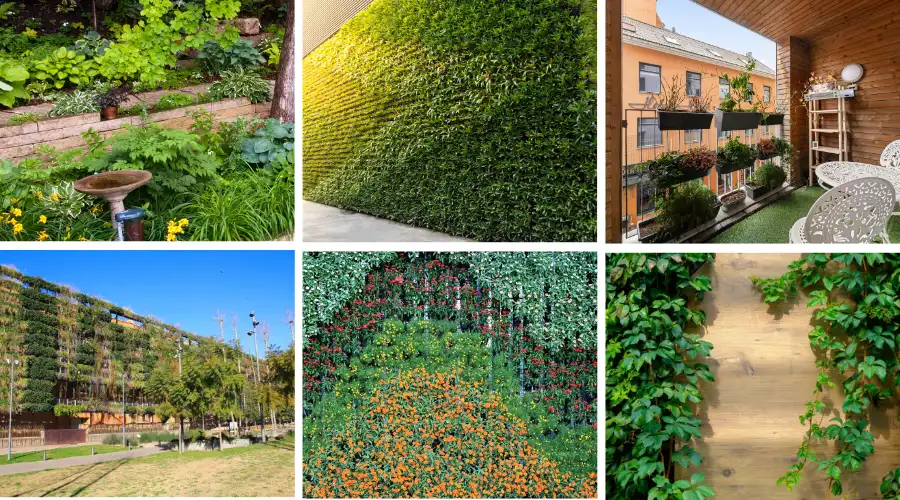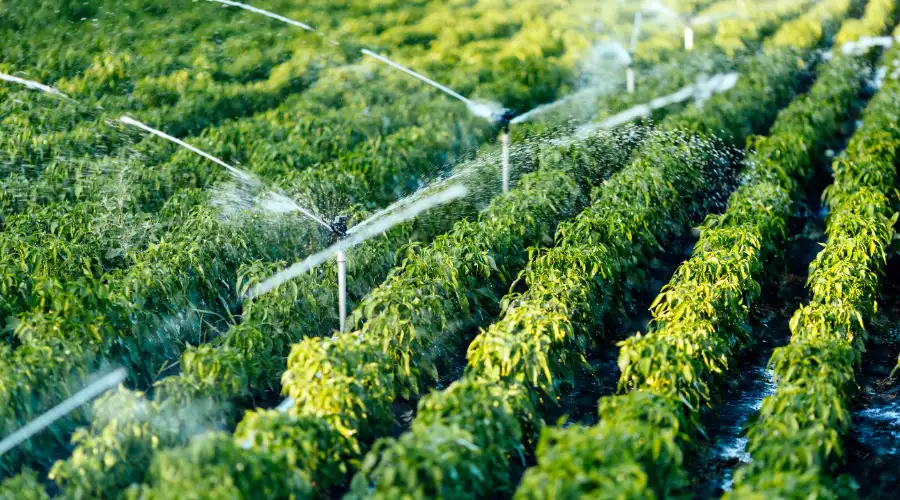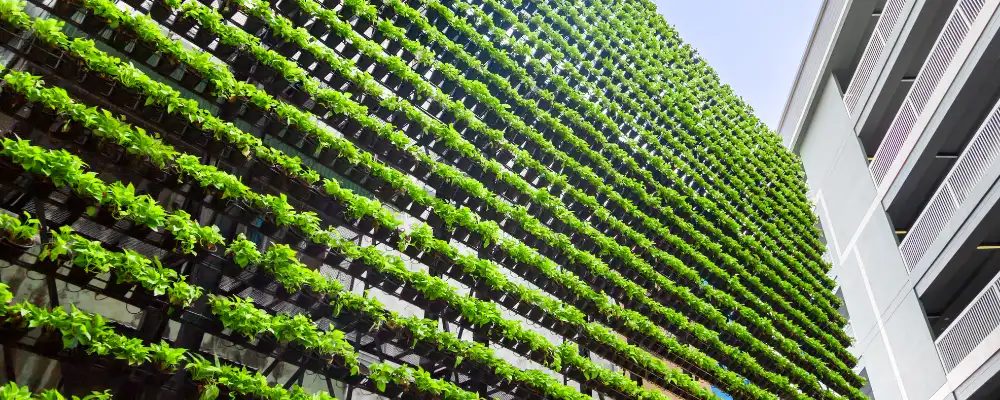The need for sustainable building practices is becoming necessary as cities keep growing. A vertical garden wall is a very creative way of solving this problem and includes mixing nature and architecture in very unique ways. Beautifying urban spaces with vertical wall gardens offers substantial environmental perks apart from pure air and natural temperature adjustments. Their contribution to combating the negative effects of urbanization is, therefore, an invaluable one. Continue reading to understand more about this feature.
What is a Vertical Garden Wall?
A vertical garden wall, or a green wall, is a method of growing plants vertically, usually on the outer walls or the facade of a building, or less formally on the interior walls of the same green building. With this design—which integrates greenery and irrigation systems—the cultivation of plants can be done in any place, regardless of the size of the area. The wall garden made up of different kinds of materials and plants, such as hydroponic, soil-based, and pockets, can enable the healthy growth of greenery in buildings.
Benefits of Vertical Garden Walls

- Improving Air Ventilation in Homes: Vertical gardens absorb pollutants and greenhouse gases like carbon dioxide, releasing fresh oxygen and thus improving air quality in urban areas.
- Energy Efficiency: They allow for natural insulation, thus saving energy costs by keeping the indoor temperatures at the most suitable level.
- Noise Reduction: Vertical gardens work as sound absorbers, reducing the noise levels by up to 8 decibels. Thus, a quieter environment is achieved.
- Mental & Physical Health: The benefits of being in the midst of nature for the mind and body have been scientifically proven. These benefits include lower transmission of air-borne diseases and better productivity.
- Space Optimisation: Vertical gardens are perfect for small spaces where growing plants on horizontal levels is difficult due to minimised floor area.
- Sustainable Organic Growth: Why not grow your organic food? In this way, you will not only have total control over your pesticide usage but you can also have a healthier lifestyle.
- Aesthetic Appeal: Green walls can either be a part of the interior or the exterior, where they serve as a visually stunning and sustainable way to decorate a room or space.
Types of Vertical Garden Walls

1. Green Walls (Living Walls)
Green walls typically involve the use of modular panels or frames that can accommodate plants on a vertical structure and often come with integrated irrigation systems. Such walls enhance the aesthetics of a place, help to purify the air, and also provide a kind of insulation in both indoor as well as outdoor areas.
2. Green Facades
A green facade consists of the climbing type of vegetation (creepers) which get support from trellises, wires, or similar frameworks. It is very low-maintenance and best for making green curtains naturally on the facades of buildings and hardly need irrigation.
3. Pots and Panels Systems
Modular pots or panels that are fixed directly on walls (using simple hardware fittings like clamps and screws) make it convenient to change the plants, and also allow easy maintenance. The system is well-liked for small areas like balconies or urban homes.
4. Biowall Systems
Biowalls use hydroponics or soil-less growing mediums, which have an in-built automated system for water recycling. Such a wall, being energy-efficient and requiring very low maintenance, is thus great for very large commercial or public spaces.
5. Mesh and Pot Systems
Mesh frames are the support for individual plant pots so that the climbing plants (creepers) can grow naturally. The system is very simple to install and maintain, and is suitable for both small and large-scale applications.
6. Freestanding Vertical Garden Systems
Freestanding systems are independent units with a self-supporting frame and have their own irrigation system. These can be placed anywhere, thus offering flexibility and portability, and are the best choice for terraces, patios or multipurpose spaces.
7. Hanging Vertical Gardens
Hanging gardens consist of pots or bags that are suspended from the ceiling or other structures. These systems are quite light in weight and easy to install, so they are ideal for small spaces or urban settings. Vines, ferns and flowering plants with hanging trails are ideal for such gardens.
8. Pocket Gardens (Fabric/Felt/Canvas Systems)
In pocket gardens, fabric or felt material is used as the base to grow plants. These systems are small in size, water-efficient, and perfect for small urban gardening projects. They are also flexible, meaning that they can be used to grow plants around columns, angular walls and other curving/ angled surfaces.
9. Artificial Vertical Gardens
Artificial vertical gardens consist of synthetic plants that mimic the appearance of a real garden. They are very easy to maintain and suitable for places where living plants cannot survive. Such gardens may utilise any of the above systems for support and irrigation.
10. Tower Gardens (Garden Towers)
The concept of tower gardens is where different levels with plants grown using hydroponics or soil are stacked one on top of another. Thus, these gardens are very compact and have become a very sensible option for urban areas that are small and lack a good growing solution.
Apart from these common types, vertical garden walls can also be customised to suit specific project needs.
Cost and Budgeting for Vertical Garden Walls
Creating a vertical garden can cost anywhere between Rs. 250 and Rs. 1600 per square foot (of vertical area), depending on various factors. These factors include the type of system, the garden’s structure and design, plant selection, watering system, support structures needed, materials used and installation location.
Choosing the Right Vertical Garden System

- Space Utilisation: Determine how much space you have and choose the best option between wall-mounted systems, such as modular panels or freestanding systems for large areas.
- Environmental Suitability: Buying a system that fits your environment is the most important factor. For example, biowalls and green walls are perfect for outdoor use, while pocket gardens are good for indoor spaces. It is also important to check what kind of plants may grow well in the particular climate of the region.
- Maintenance Level: Think about how much time you have and how much of it you are willing to spend on maintenance. Bio walls and green facades might need more care, while hydroponic systems can be taken care of with minimal effort.
- Plant Selection: Make sure that the system can cater to the plants that you want to grow. For the water-intensive plants, or for larger installations, pick the systems that have irrigation integration.
- Budget: Weigh the cost against desired features. A pocket garden is a simple and basic system that is quite cheap, while bio walls are more costly but offer a lot of advantages in the long run.
- Aesthetic Fit: Choose a pattern, system and plants that complement the overall design of your building.
Conclusion
Living walls are a fantastic means of introducing nature into the concrete jungle of today’s urban spaces, adding not only visual charm but also benefiting environmental quality. They provide a great range of advantages including the efficient use of space, purification of air and energy savings, depending on whether one uses just a facade or a highly technical bio-wall system. The green wall you have always dreamed of, that not only beautifies your place but also helps save the planet, is achievable with a properly executed system and plant choices.

